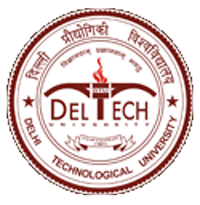Please use this identifier to cite or link to this item:
http://dspace.dtu.ac.in:8080/jspui/handle/repository/21449| Title: | EXPERIMENTAL INVESTIGATION ON PRODUCTION AND OPTIMIZATION OF BIOGAS USING DIFFERENT FEEDSTOCKS AND ITS UTILIZATION IN AN IC ENGINE |
| Authors: | LALHRIATPUIA, S. |
| Keywords: | BIOGAS FEEDSTOCKS IC ENGINE RSM MODEL CBP |
| Issue Date: | Jan-2024 |
| Series/Report no.: | TD-7762; |
| Abstract: | To counter the concern of the future availability of fossil fuels due to ever-increasing energy demand and the emission generated due to their utilization, alternative renewable fuels such as biogas, biodiesel, and fuel additives in the form of nanoparticles emerge as viable alternative fuels. Biogas production was carried out to study the effects of feedstocks, temperature, and mixing duration, followed by optimization of process parameters on a lab scale for optimal Methane percentage and biogas production rate. A novel design for biogas digester agitation was prepared and fabricated for this study. Computational methods such as Response Surface Methodology (RSM) were used to establish a prediction model based on the Design of experiment (DOE) results. The developed RSM model's F-value indicates Temperature was the most substantial influence in deciding the value of the ratio of methane (CH4) to Carbon dioxide (CO2). At the same time, Mixing Duration was the most considerable influence in determining the value of Cumulative Biogas Production (CBP). The highest Cumulative Biogas Production (CBP) and CH4/CO2 were observed for Kitchen waste as feedstock for biogas production, followed by Vegetable waste and Fruit waste. At 40ºC digester temperature, Anaerobic digestion of kitchen waste exhibits 9.67% and 18.63% higher CBP than Vegetable and Fruit waste, respectively. For Kitchen waste, an increase in CBP of 19.47% and 11.68% was observed for the digester temperature of 50ºC and 60ºC, compared to the digester at 40ºC. As for the average CH4/CO2, a 62% and 45% increase was observed for the kitchen waste with a digester temperature of 50ºC and 60ºC, compared to kitchen waste with a digester at 40ºC. Regardless of the types of feedstocks, the highest CBP and CH4/CO2 are observed for the digester with a mixing duration of 15 minutes, followed by the digester with 30 minutes and the digester with no mixing, respectively. For Kitchen waste at a digestion temperature of 40ºC, an increase in CBP of 24% and 14% was observed for the digester at the mixing duration of 15 minutes and 30 minutes, compared to the digester with no mixing. The RSM model observed an optimum value of CBP and CH4 / CO2 at the temperature of 54.44 ºC, a mixing duration of 14.51 min, and a feedstock mixture of 86% kitchen and 14% vegetable waste. The optimization findings confirm the positive effect of tumbling for both biogas production rate and methane production. The optimal biogas production process parameters are then used to replicate biogas production on a larger scale for biogas enrichment and its v utilization in the CI engine. Biogas Enrichment was conducted to increase the biogas methane (CH4) content to 89.3%. Input parameters such as Engine load, Cobalt oxide nanoparticles doped rate (NDR), Linseed biodiesel blend rate (BBR), and Biogas flow rate (BFR) were studied for their effect on engine performance and emission outputs. Compared to the engine run on neat diesel, NOX and Smoke exhibit a decrease of 51% and 52%, respectively, for the engine run on BFR 1 kg/h. Compared to the engine run on the BBR 20 blend, HC, CO, and Smoke Opacity decreased by 17%, 14%, and 13%, respectively, for the engine run on the BBR20-NDR100 blend. RSM and ANN were used to study the interaction effects of input parameters and their optimization. The developed RSM model's F-value indicates engine load as the most significant input variable in deciding the value of output responses, followed by BFR, NDR, and BBR, respectively. The statistical analysis using different evaluation metrics suggests the prediction made by the RSM model is more accurate and reliable than the ANN model. The optimization for the RSM model observed an optimal response at 67.45% engine load, 96.06 ppm NDR, 10.7 % BBR, and 0.85 kg/h BFR, while an optimal response for the ANN model was observed at 67.01% engine load, 98.39 ppm NDR, 8.41% BBR and 0.846 kg/h BFR. The optimization study findings concluded that an optimal combination of nanoparticles, biodiesel, and biogas could significantly improve CI engine performance and emission responses. Enriched biogas is utilized in a compression ignition (CI) engine, resulting in enhanced engine performance and decreased emissions, except for nitrogen oxides (NOX) when compared to engine run on raw biogas. |
| URI: | http://dspace.dtu.ac.in:8080/jspui/handle/repository/21449 |
| Appears in Collections: | Ph.D. Mechanical Engineering |
Files in This Item:
| File | Description | Size | Format | |
|---|---|---|---|---|
| S. LALHRIATPUIA pH.D..pdf | 13.06 MB | Adobe PDF | View/Open |
Items in DSpace are protected by copyright, with all rights reserved, unless otherwise indicated.



